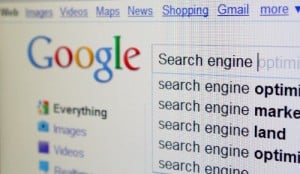Search engine optimization is a comprehensive web strategy designed to drive search traffic to your website. But did you know there are different things you can do on your website to encourage better traffic?
If you’re feeling rather DIY, here are five SEO best practices from Google that you need to make a priority today.
1. Write about what your customers care about
If you want good search engine optimization, you first have to serve your customers well by writing information they care about and can use. The first rule about search engine optimization is to write for people, not search engines.
By writing informative articles, pages, blogs, etc. on your company website, you are positioning yourself for success even if you don't optimize anything.
That said, you should optimize your blog to get the most from what you're publishing on your website. Here are some technical specifics.
2. Do your research; put keywords where they matter.
When a potential customer types a keyword into a search engine, the first results that appear are partially based on the title of the page, and the description of your page is shown in Google when someone searches for a topic your website ranks for.
To increase the chances that your website appears when users search for a given topic, it’s important to make sure that the following information is included in your html file:
<html>
<head>
<title>YOUR SITE TITLE</title>
<meta name="description" content="YOUR DESCRIPTION OF PAGE CONTENT">
</head>
</body>
This is the information that will show up in a search result. Choose keywords that are relevant to and accurately describe the content on the page.
3. Make your URLs work for you
When you update your website’s blog or add a new page of content, you have the opportunity to give the page a "title" that will appear in the URL.
Often, web page URLs are automatically created by your content management system. However, you can help your search results by giving keyword-appropriate titles for pages and blogs.
For example, instead of keeping the randomly-assigned page title, “/24334-Page2,” make sure your page URLs are descriptive. A post about selling IT equipment should have the URL of “/selling-IT-equipment” to be properly optimized for SEO.
4. Include meaningful anchor text in your links
When you link to another website, you have the option to write out the website address or to hyperlink text on the page. Hyperlinks are a valuable resource on the internet -- but did you know they can also help or hinder your SEO?
Instead of writing a sentence like “Find out more information by visiting www.SEOHelpExample.com,” or “Find out more information by visiting this website,” it would actually benefit your site and the site you are linking to more if you included a hyperlink with related anchor text, or hyperlinked text, such as the following: “Find out more information by visiting SEO Help Example homepage.”
When a search engine crawls the page, it will pick up the keywords “SEO,” “Help,” and “Example,” which are better search keywords than “www.SEOHelpExample.com” or “this”. The search engine will also compare the anchor text to the page title, so linking to “www.SEOHelpExample.com/SEO-Help” would rank better than a page titled “www.SEOHelpExample.com/Untitled1”.
5. Add descriptive text to your images
You might think there’s nothing you can do to make images more search friendly. However, you can actually make images an important part of your website’s search optimization by including “alt” tags.
When an image does not show up on a web page, “alt” information provides a description of what the image displays. This text is displayed instead of the image in the event the image cannot be shown.
Even more useful? The “alt” text acts as anchor text for the image, providing more benefit to your page and to the image itself when it is accurate and on-topic.
Finding this all a little overwhelming? Relax -- that’s what we’re here for. We have the expertise, the time, and the professionals on staff to help you develop your comprehensive online strategy and get the most out of your website.









